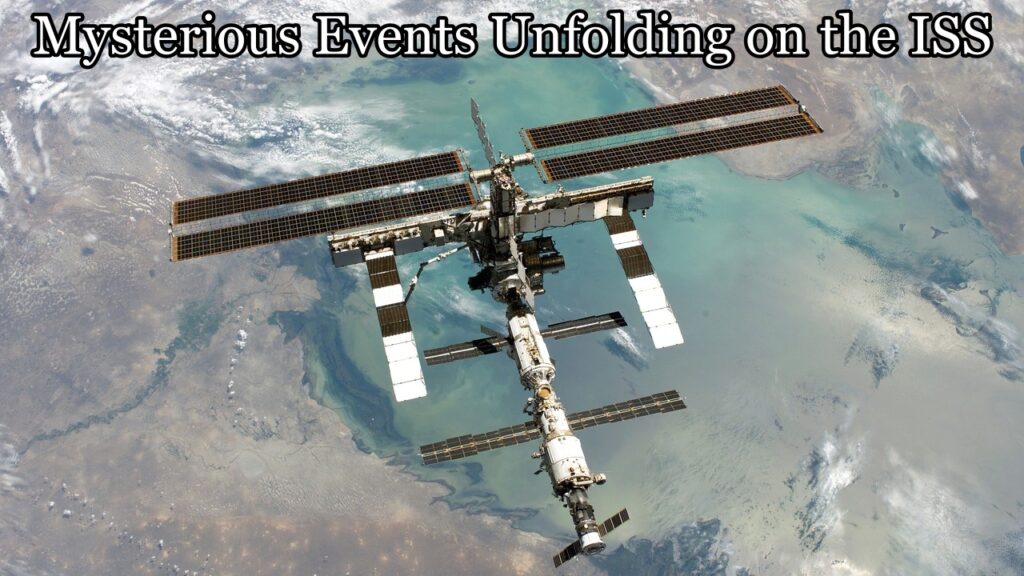In today’s episode of space news, we’ve got a lot of interesting developments to dive into. From a mysterious odor on the International Space Station (ISS) to Starship’s big plans for 2025, China’s space innovations, and Rocket Lab’s rapid progress in the space launch industry—there’s no shortage of exciting stories. Let’s get into it!
Something Weird Is Happening on the ISS: A Mysterious Odor
Let’s start with something unusual happening aboard the ISS—a foul odor that has astronauts scratching their heads. No, this isn’t related to the zero-gravity toilet, but something more concerning. The source? A freshly docked Progress MS-29 spacecraft from Russia.
The uncrewed Progress MS-29 supply ship arrived on November 23rd, bringing much-needed food, water, and propellant to the station. But when Russian cosmonauts opened the hatch, they were met with an unexpected surprise: a strong, potentially toxic smell and fluid droplets floating inside.
Both NASA and Russian space authorities confirmed the incident, with NASA astronaut Donald Pettit describing the odor as something like spray paint. The Russian team quickly took action, sealing off the airlock and isolating the module. While air quality on the station remains normal, the contamination in the supplies raises concerns. As of now, the team is unsure about the long-term implications for the food and supplies that are still in the affected module.
Stranded Astronauts in Space: A Growing Concern?
Shifting gears, there’s been growing speculation about the health and well-being of astronauts stranded in space due to delays in the Boeing Starliner mission. Astronauts Suni Williams and Butch Wilmore have spent longer than planned aboard the ISS, but contrary to recent tabloid headlines, they are not malnourished.
In fact, Williams, who is 59, maintains a healthy weight and continues to follow a rigorous fitness regimen. Along with other astronauts, she spends over two hours a day exercising to combat the effects of microgravity. They must also consume 2,500-4,000 calories per day to stay healthy in space.
To monitor their health, astronauts use specialized equipment like the space linear acceleration mass measurement device to check their mass, not weight, in the absence of gravity. And contrary to certain rumors, astronauts don’t drink soup made from their own pee—they rely on a closed-loop recycling system for water, which does include urine processing, but not in such a dramatic way as some reports suggest.
Starship’s Big Milestone for 2025: FAA Greenlights More Launches
Exciting news for SpaceX’s Starship program! The Federal Aviation Administration (FAA) has released an updated environmental assessment for Starbase, Texas, indicating that SpaceX could increase the number of launches from the site. According to the latest draft, up to 25 launches and 25 landings per year may be possible for both the Super Heavy booster and the Starship upper stage.
This is fantastic news for the company, as it paves the way for future Starship flights in 2025. The FAA’s review period runs until January 17, with public meetings scheduled in Texas and online. This update aligns with SpaceX’s plans for the next launch of Starship Flight 7, expected to take place around January 11. While Flight 7 may not involve a Starship catch, Flight 8 could potentially mark the first return-to-launch-site mission from orbit.
China’s Space Ambitions: Inflatable Habitats and Space Agriculture
In other international space news, China’s space program continues to make waves. They’ve recently completed an exciting mission involving the Xian-19 retrievable satellite, which launched on September 27 and safely returned to Earth on October 10. This mission tested an inflatable habitat module, similar to the Bigelow BEAM module aboard the ISS.
Although the Chinese inflatable module was smaller and short-lived, it indicates that China is looking into inflatable structures for future space stations and long-term lunar bases. China has long-term plans to expand its Tiangong space station and build a permanent base on the Moon, making this a critical step in their long-term space goals.
Additionally, China has been experimenting with breeding plants in space, using radiation and microgravity to accelerate genetic mutations and improve crop resilience. This could be a huge breakthrough for China’s food security, given its relatively limited fertile land. We could be looking at the future of space farming that might not only feed astronauts but also provide the tools for sustainable living on the Moon and beyond.
Rocket Lab’s Rapid Progress: Dominating the Small Satellite Market
Meanwhile, Rocket Lab is making impressive strides in the small satellite launch sector. In a 24-hour span, the company successfully launched two Electron rockets. The first, launched from Wallops Island, Virginia, on November 23, tested the Hypersonic Accelerator Suborbital Test Electron. Then, later that day, Rocket Lab launched a third set of Kineis satellites from New Zealand.
This is a major milestone for the company, marking the fastest turnaround time in Rocket Lab history. They’ve now completed 14 Electron launches in 2023, and while they won’t hit their goal of 22 launches this year, CEO Peter Beck estimates they’ll achieve between 15 and 18 launches in 2024. This shows Rocket Lab’s growth and dominance in the small satellite launch industry, securing a steady stream of contracts for the coming years.
Conclusion: The Future of Space Exploration Is Now
It’s clear that space exploration is advancing rapidly, with SpaceX, China, and Rocket Lab all making significant strides toward new space frontiers. While the ISS faces its challenges with unexpected smells and concerns over astronaut health, there’s no slowing down for space innovation. With Starship’s 2025 goals in sight and China’s ambitious space plans, we’re on the verge of seeing even more exciting developments in the coming years.
Read More:

